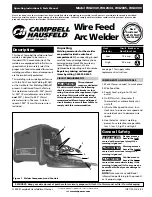
Smart Connect
Single Loop Touch Screen Panel
Doc: GLT-229-7-1
22
Issue: 3
Date: 12/05/2017
4.6.3 PCB CONVENTIONAL SOUNDER CIRCUITS
The termination PCB has 2 conventional sounder circuit outputs, with a maximum capacity of 100 mA each. Please note that
conventional sounders should be wired as shown in the diagram below:
*The descriptions of sounders in this section also apply to flashers and combined sounder / flashers.
+
- -
+
+
- -
+
SND+
SND-
SOUNDER
SOUNDER
+
- -
+
SOUNDER
+
- -
+
SOUNDER
10K
End of
Line Resistor
Note: If non-polarised alarm devices (e.g. some types of old mechanical bell, or a relay) are used, then a diode will have to be
placed in line with the device to enable fault monitoring. They may also need a back EMF protection diode. (symptoms: Chattering
sounder relays that don’t turn off).
+
- -
+
SND+
SND-
BELL
10K
End of
Line Resistor
+
- -
+
+
- -
+
BELL
BELL
CONNECTOR
BLOCK
POLARISING
DIODE
BACK EMF
DIODE
NC
NO
CM
RELAY
4.6.4 ADVANTAGES AND DISADVANTAGES OF DIFFERENT SOUNDER TYPES
SOUNDER TYPE
ADVANTAGE
DISADVANTAGE
Conventional
Wide range of devices.
Devices tend to be cheaper.
Immediate start / stop.
No quiescent current.
Needs extra cabling.
All sounders on each circuit start together
Stand-Alone Addressable or
Addressed Sounder Base
No extra cabling.
Can be individually started.
Can use any type of detector.
Tends to be more expensive.
Maximum 64 per loop.
Quiescent current relatively high.
Uses an address.
Combined Detector sounder
Can be individually started.
Only uses one address space.
Uses a standard detector base.
Only available as an optical detector. Not
available as heat, opto-heat, dual optical
etc
Addressable Sounder Circuit
Controller
Wide range of devices.
Devices tend to be cheaper.
Can Add many sounder circuits to system.
Sounder circuit can be assigned to zone.
Needs Extra Cabling.
Needs External PSU.
Uses device Address.
4k7
End of Line
Resistor
4k7
End of Line
Resistor
















































